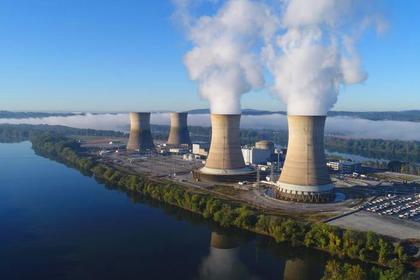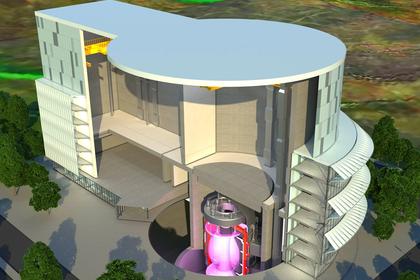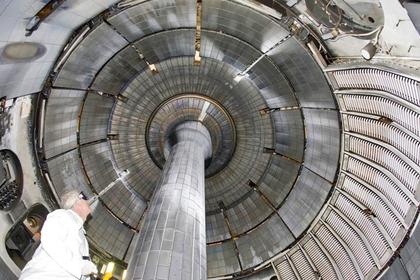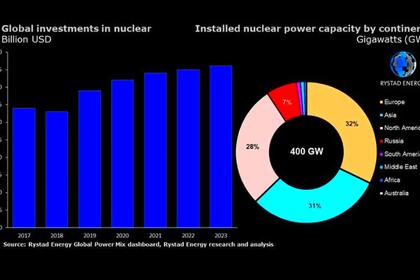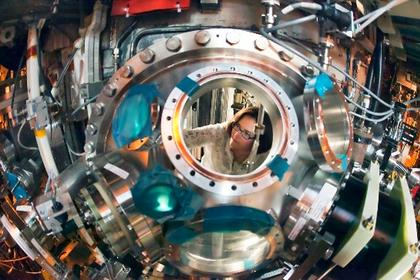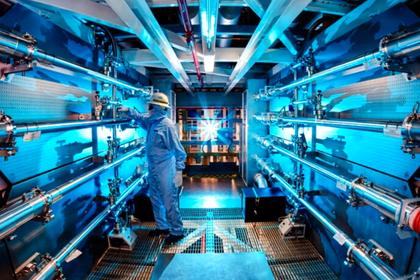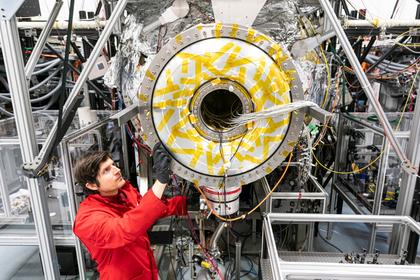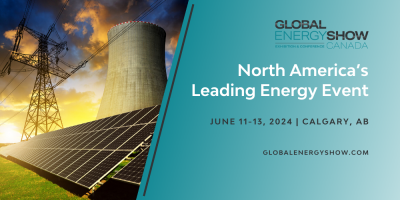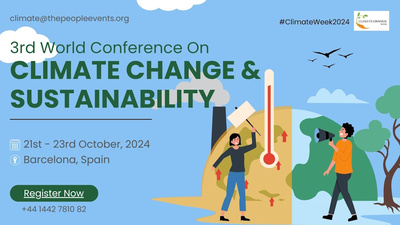
RUSSIAN STABLE PLASMA
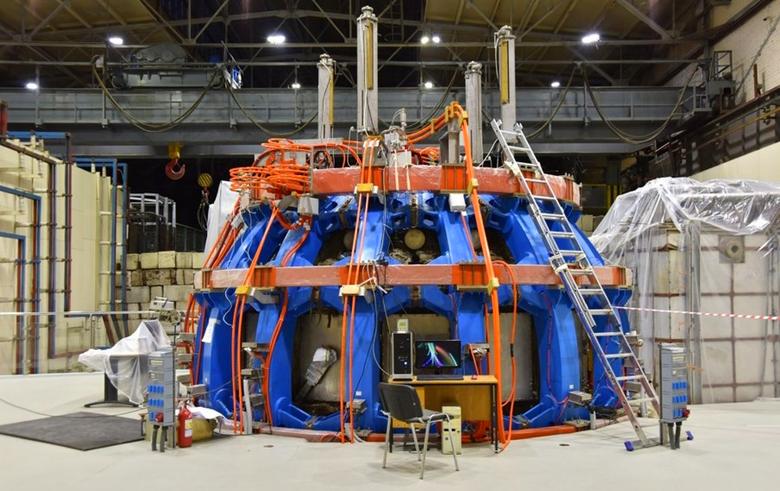
N - 18 April 2023 - The first thermonuclear plasma has been achieved at the T-15MD tokamak, at Russia’s Kurchatov Institute and the facility is operating steadily, according to Kurchative Institute President Mikhail Kovalchuk. The physical launch of the T-15MD tokamak took place in May 2021. "The stable plasma, at millions of degrees Celsius, has been obtained.… This most complicated and expensive installation started up immediately and is now working, gaining power and reaching global parameters,” he said.
The T-15MD tokamak is a modified version of the T-15 complex that operated at the Kurchatov Institute from 1988 to 1995. It is the first new thermonuclear plant to be built in Russia in the last 20 years. The facility supports the International Thermonuclear Experimental Reactor (ITER) under construction in France.
The original T-15 machine was entirely disassembled in 2017 and all major components were modernised, from auxiliary plasma heating and current drive systems to the new, non-superconducting silver-copper magnet systems and graphite inner surfaces. ITER said the upgraded tokamak “will extend the operational domain of ‘ITER-complementary’ machines, with an experimental programme that will contribute to the determination of optimal operating parameters for ITER and for future fusion reactors”.
The T-15MD is unique in its combination of high power and compact dimensions. High-performing auxiliary plasma heating and current drive systems will allow the simultaneous achievement of high plasma temperature and plasma density, with pulse lengths of up to 2030s. ITER said the machine will be a test bed for different auxiliary heating scenarios through its capabilities in neutral beam injection, electron cyclotron resonance heating (six gyrotrons), ion cyclotron resonance heating (three antennas), and low hybrid heating and current drive, as well as a test bed for fusion material studies.
The research programme on the T-15MD tokamak will be aimed at solving the most pressing problems of ITER, such as the mechanism of formation and maintenance of transport barriers, the stationary generation of non-inductive current, heating and retention of a hot plasma, control of processes on the first wall and in the divertor, and the suppression of global instabilities and periodic energy emissions on the wall.
The concept of the tokamak – toroidal chamber with magnetic coils – was developed in the 1950s by Soviet physicists Igor Tamm and Andrei Sakharov. The first working tokamak – the T-1 – was the work of Natan Yavlinsky in 1958. By the mid-1960s, the tokamak designs began to show greatly improved performance. The initial results were released in 1965, but were ignored. A second set of results published in 1968, showed performance far in advance of any other fusion machine and scientists from the UK were invited to the USSR to make their own measurements. These confirmed the Soviet results, which were published in 1969. By the mid-1970s, dozens of tokamaks had been constructed around the world.
-----
Earlier:
